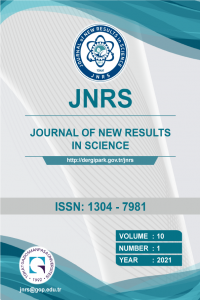Measuring and Evaluating TV White Spaces in Samsun, Turkey
The aim of this study is to determine the available Television White Space (TVWS) spectrums in Samsun with the aid of TV spectrum measurements at 73 different locations. The measurements were performed within 470 MHz -790 MHz band, using software based RTL2832U-R820T and ANRITSU S332E frequency analyzer. In the measurements -40dB and -45dB above signals are considered. It is seen from the measurement results that, frequency spectrum usage change depending on the distance from TV transmitter station, existence of Line of Sight (LOS) path and geographical features of measurement locations. In addition, the maximum spectrum occupancy is 70% while the average spectrum occupancy is 20.7%. The spectrum occupancy increased up to 8.3 % with the choice of lower reference value (i.e. -45dB). The comparison of measurement results with the Radio and Television Supreme Council (RTSC) terrestrial transmitter list show that in measurement environment more channels are active. In the last part of the study, measurement locations were transferred on to a map via QGIS program, and available TVWS spectrum map of Samsun city was created.
Keywords:
Cognitive Radio, TV White Space, Software Defined Radio Frequency Analyzer, Spectrum Occupancy Ratio.,
___
- Federal Communications Commission (FCC), 2008. Second Report and Order and Memorandum Opinion and Order in ET Docket Nos. 02-380 (Additional Spectrum for Unlicensed Devices below 900 MHz and in the 3 GHz Band) and 04-186 (Unlicensed Operation in the TV Broadcast Bands), FCC 08-260.
- J. Mitola, and G. Q. Jr. Maguire, “Cognitive radio: Making software radios more personal,” IEEE Personal Communications, vol. 6, pp. 13–18, Aug. 1999.
- S. Haykin, “Cognitive Radio: Brain-empowered Wireless Communications”, IEEE Journal on Selected Areas in Communications (JSAC), Vol. 23, No. 2, pp. 201-220, Feb. 2005.
- I. F. Akyildiz, W. Lee, M. C. Vuran, S. Mohanty, “Next Generation/Dynamic Spectrum Access/Cognitive Radio Wireless Networks: a Survey”, Computer Network, vol.50, no.13, pp.2127-2159, 2006.
- S. M. Mishra, “Maximizing available spectrum for cognitive radios,” Ph.D dissertation, EECS-2010-1, UC Berkely, Jan. 2010.
- M. Çiçek, “Bilişsel Radyo Teknolojisi ve Düzenleme Perspektifi”, Bilişim Uzmanlığı Tezi, Bilgi Teknolojileri İletişim Kurumu, ANKARA, 2011.
- Ç. D. Arslan, S. İlhan, H. Dinçer, “Bilişsel Radyo”, Elektrik-Elektronik ve Bilgisayar Mühendisliği Sempozyumu (ELECO), 2008.
- D. C. Hieu, P. V. Tien, “Assessment of TV White Space in Vietnam, 2014 International Conference on Advanced Technologies for Communications, 15-17 October, pp.637-640, 2014.
- N. Wang, Y. Gao, Y. Chen, E. Bodanese, L. Cuthbert, “Performance Evaluation of Power Control Algorithm for TV White Space Resource in UK”, 7th International ICST Conference on Communications and Network in China, pp.733-736, 2012.
- T. Shimomura, T. Oyama, and H. Seki, “Analysis of TV White Space Availability in Japan”, 2012 IEEE Vehicular Technology Conference (VTC Fall), 3-6 September, pp.1-5, 2012.
- J. V. Beek, J. Riihija, A. Achtzehn, M. Petri, “IEEE TV White Space in Europe”, IEEE Transaction on Mobile Computing, pp.178-188, 2012.
- M. Nekovee, “Cognitive Radio Access to TV White Spaces: Spectrum Opportunities, Commercial Applications and Remaining Technology Challenges”, IEEE Symposium on New Frontier in Dynamic Spectrum, 6-9 April, pp.1-10, 2010.
- R. Jantti, J. Kerttula, K. Koufos, K. Ruttik, “Aggregate interference with FCC and ECC white space usage rules: case study in Finland”, IEEE Symposium on New Frontier in Dynamic Spectrum Access Networks, 3-6 May, pp.599-602, 2011.
- P. Flynn, “White Space Potentials and Realities, Texas Instruments”, 2013.
- G. Naik, S. Singbal, A. Kumar and A. Karandikar, “Quantitive Assessment of TV White Space in India”, Twentieth National Conference on Communications, 28 February – 2 March, pp.1-4, 2014.
- RTSC, http://yayinci.rtuk.org.tr/web/web_giris.php (September 15, 2016)
- ISSN: 1304-7981
- Yayın Aralığı: 3
- Başlangıç: 2012
- Yayıncı: TOKAT GAZİOSMANPAŞA ÜNİVERSİTESİ
